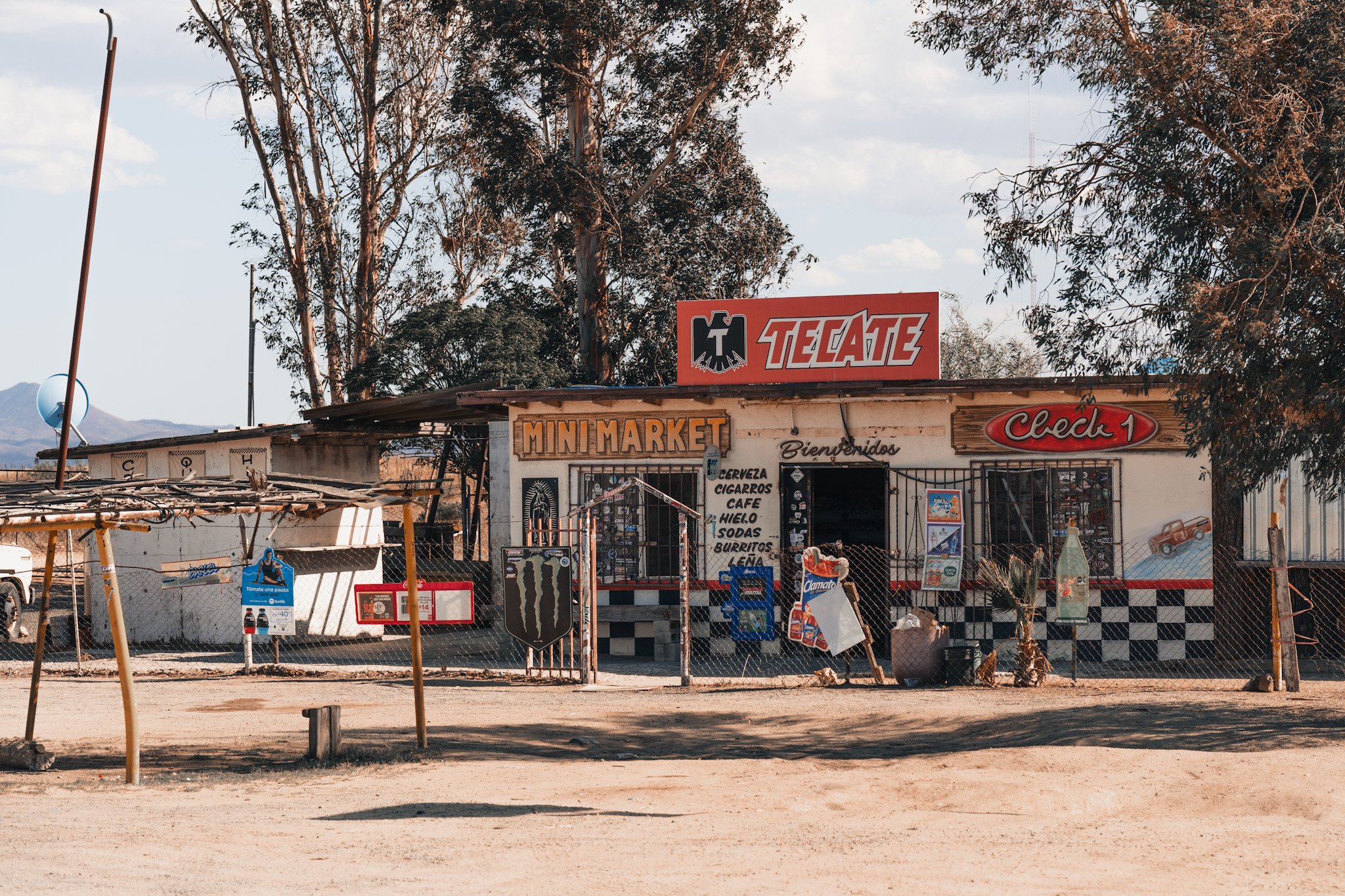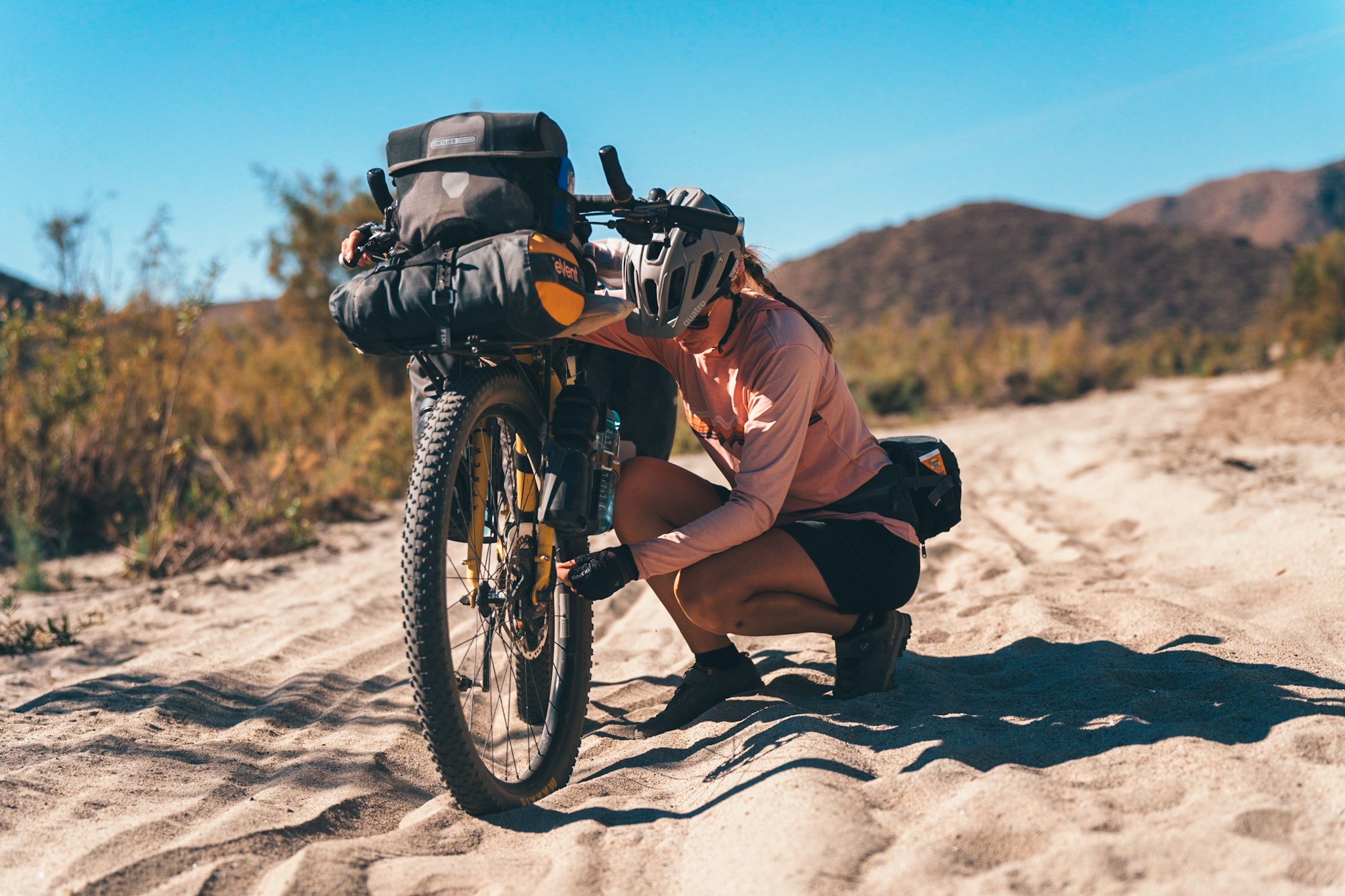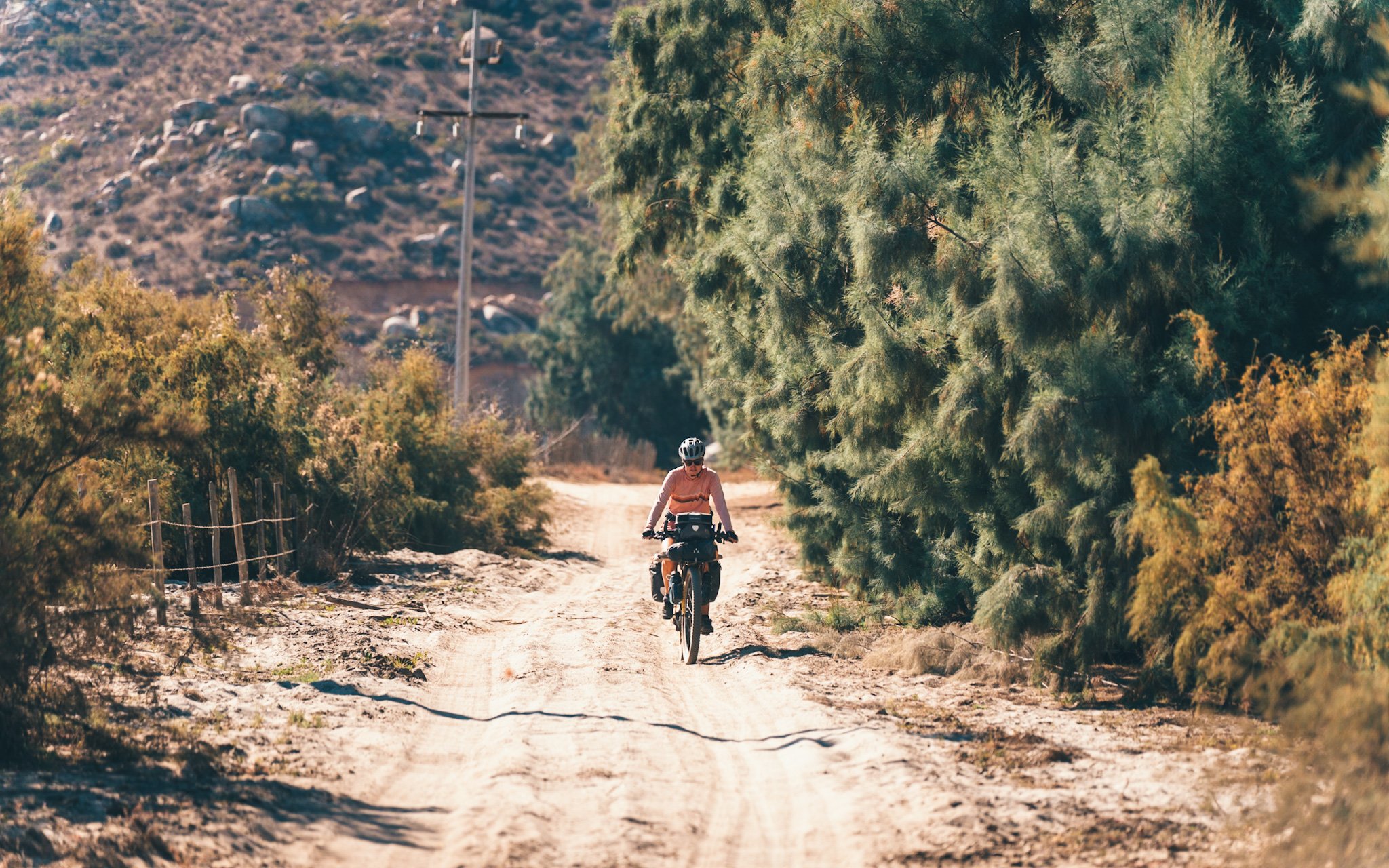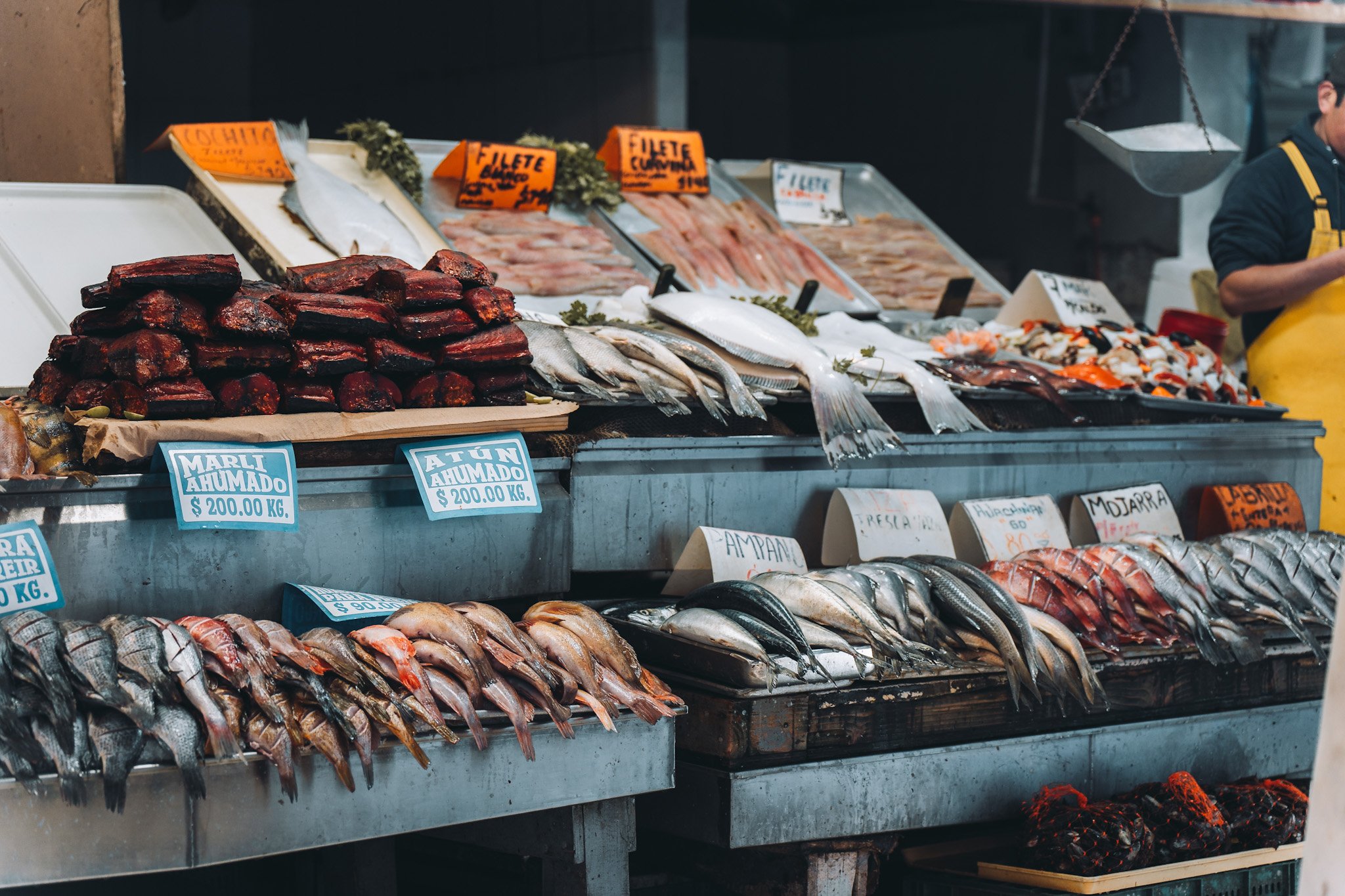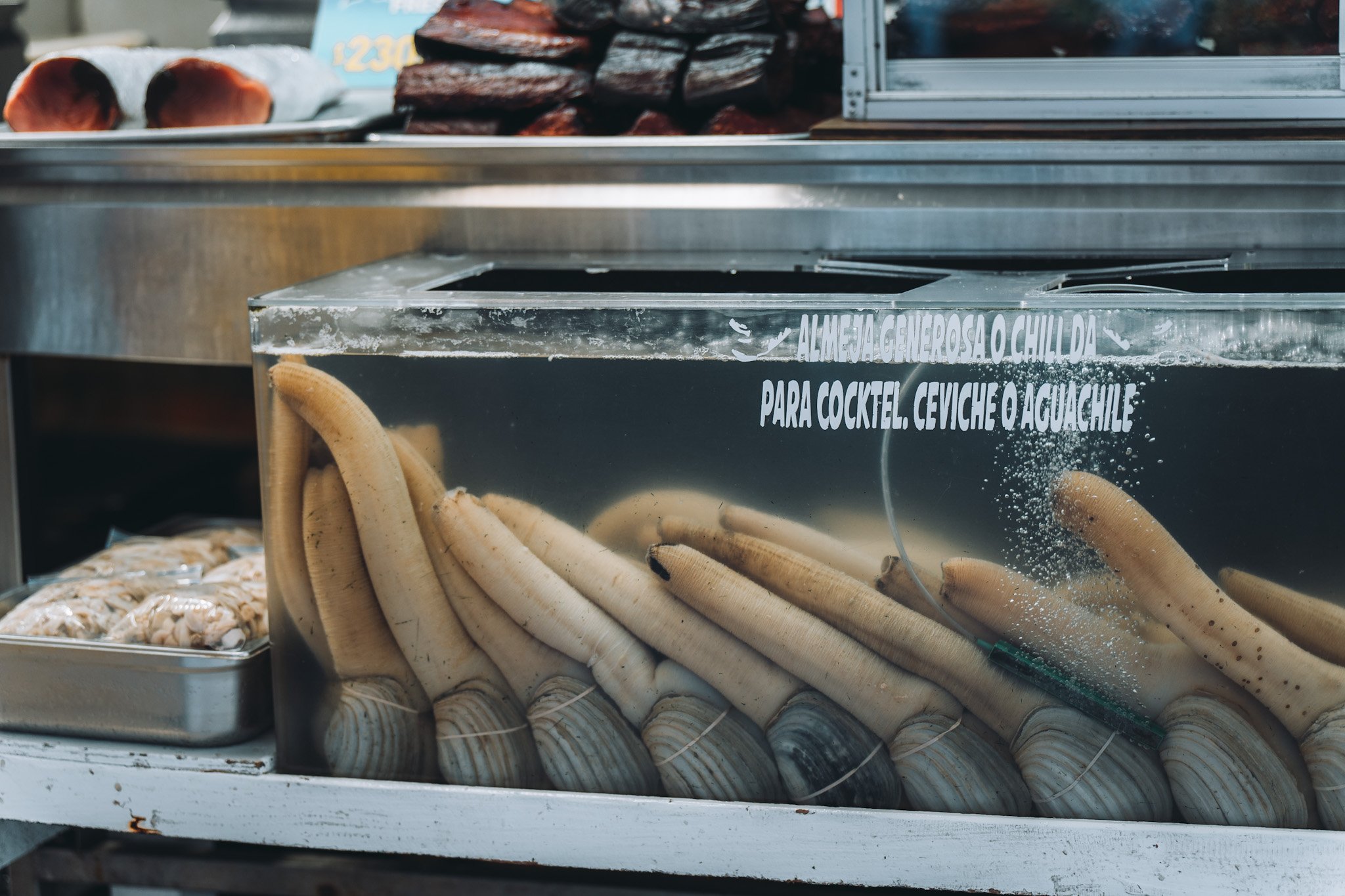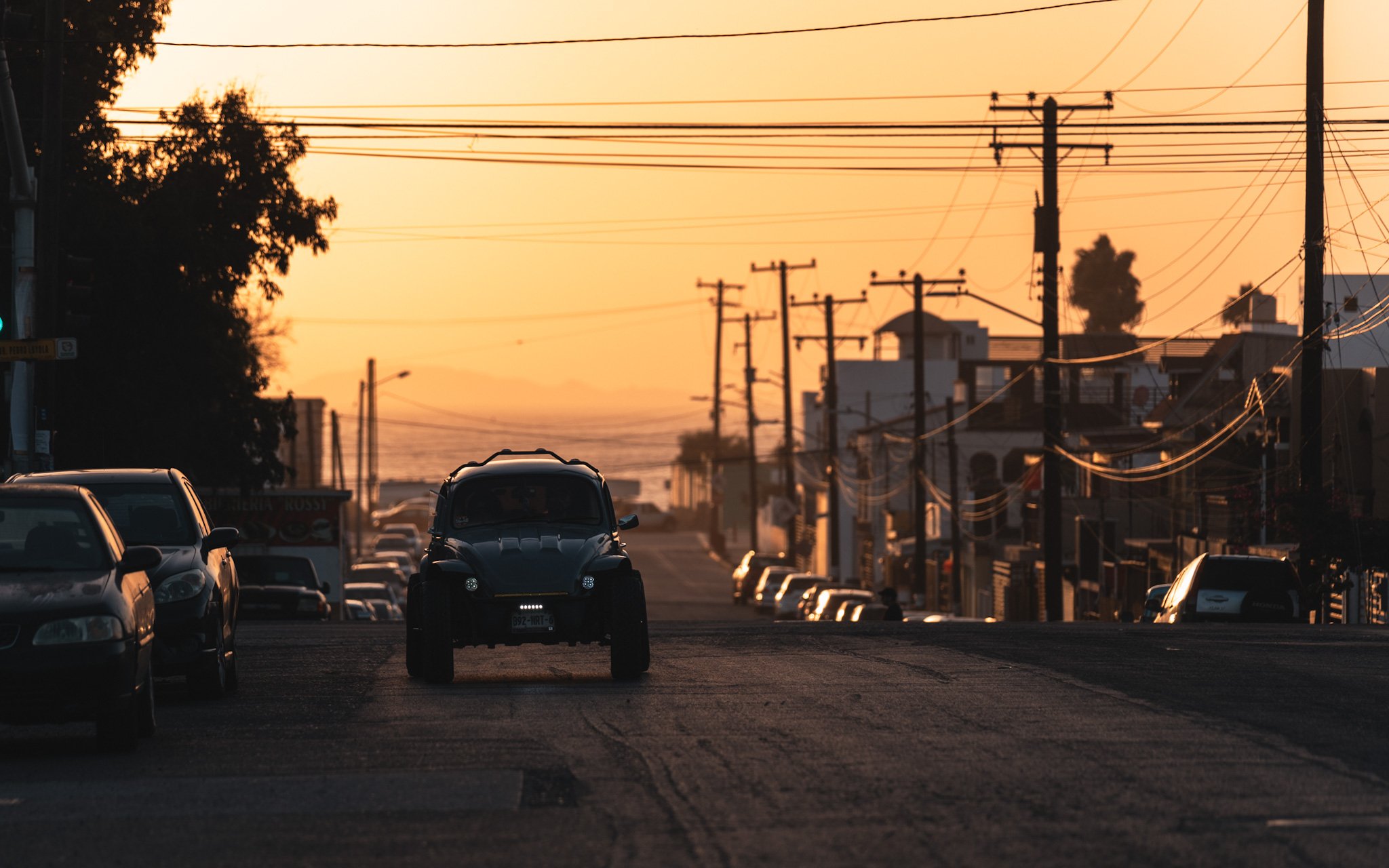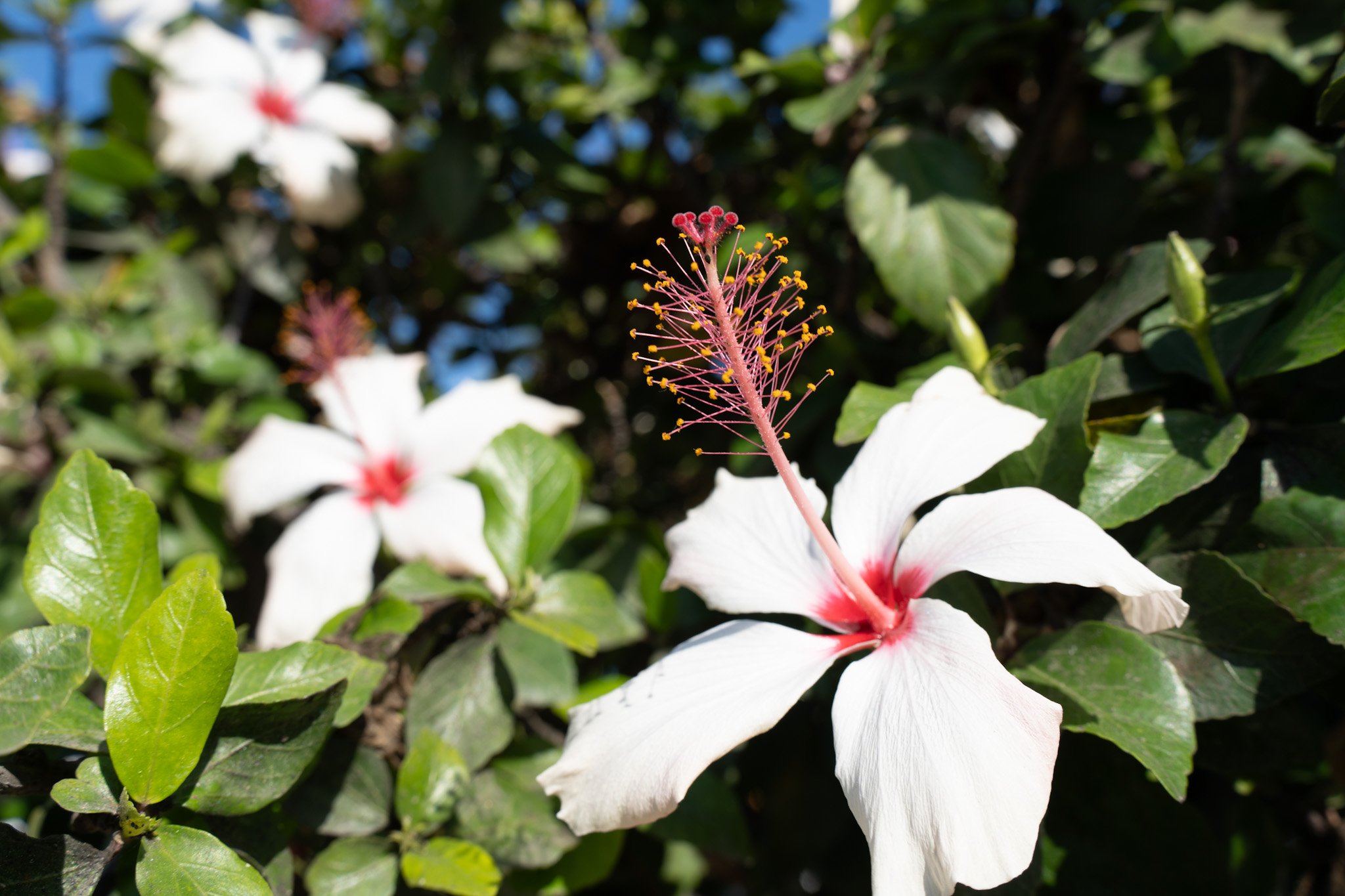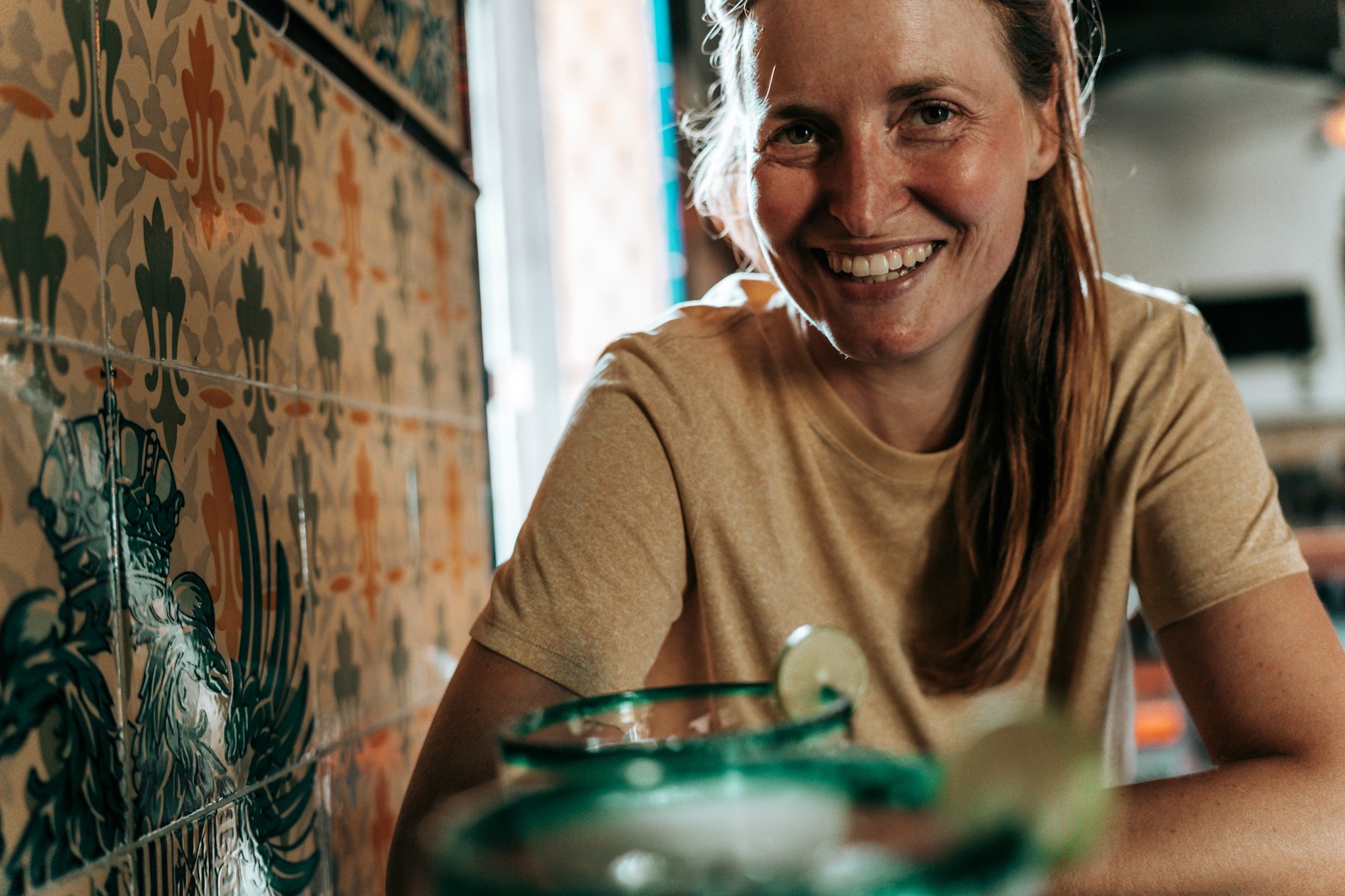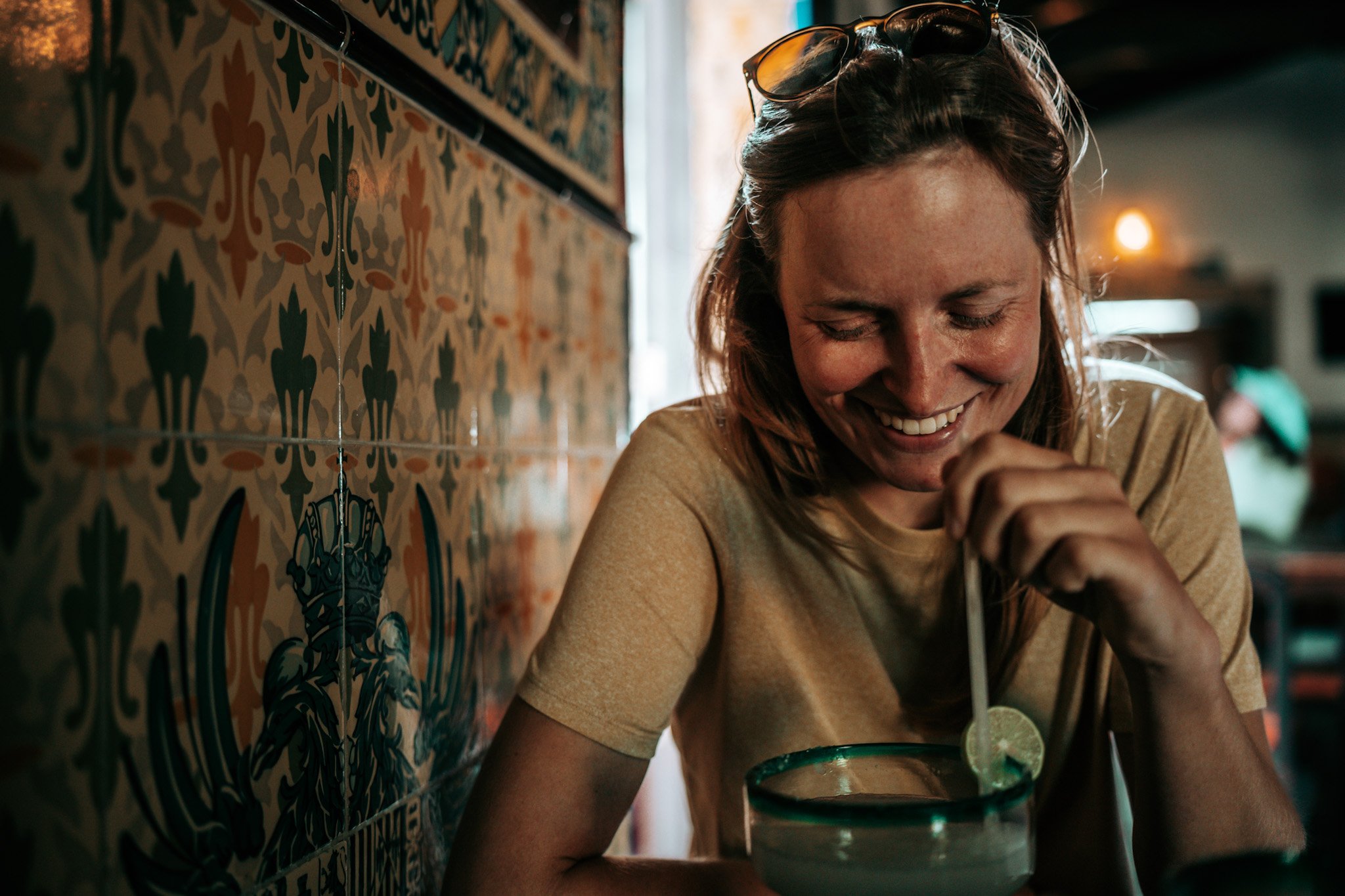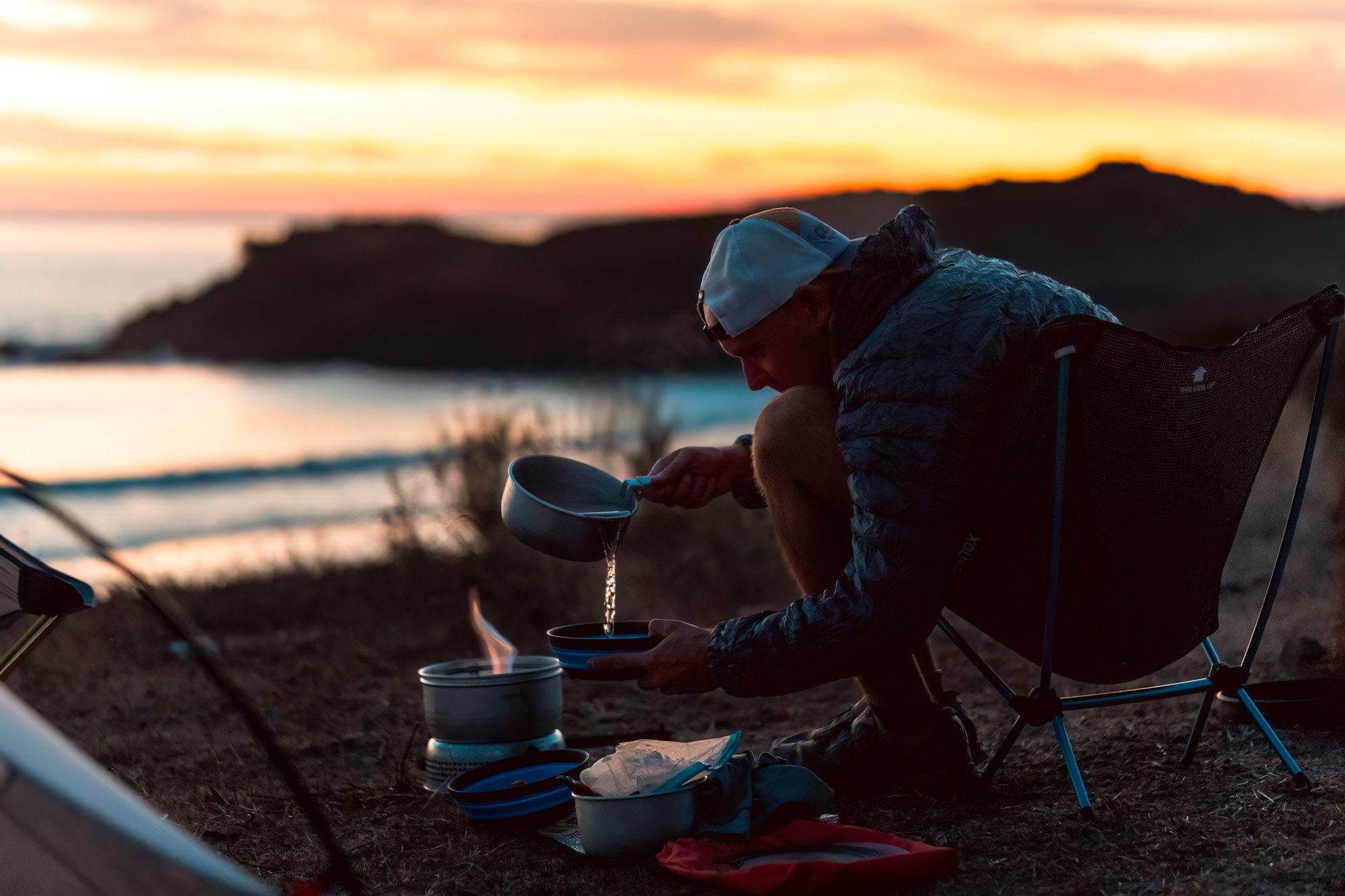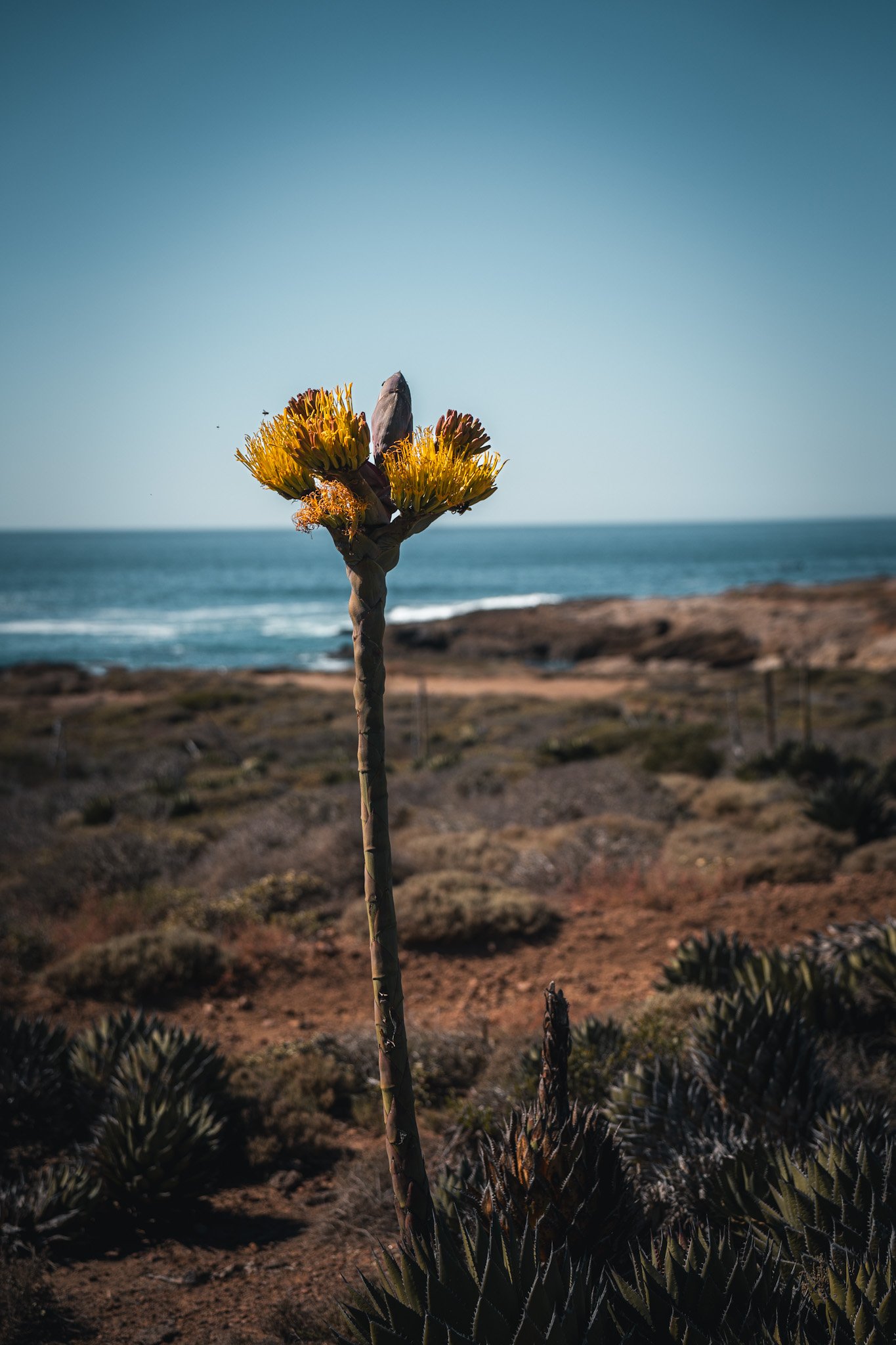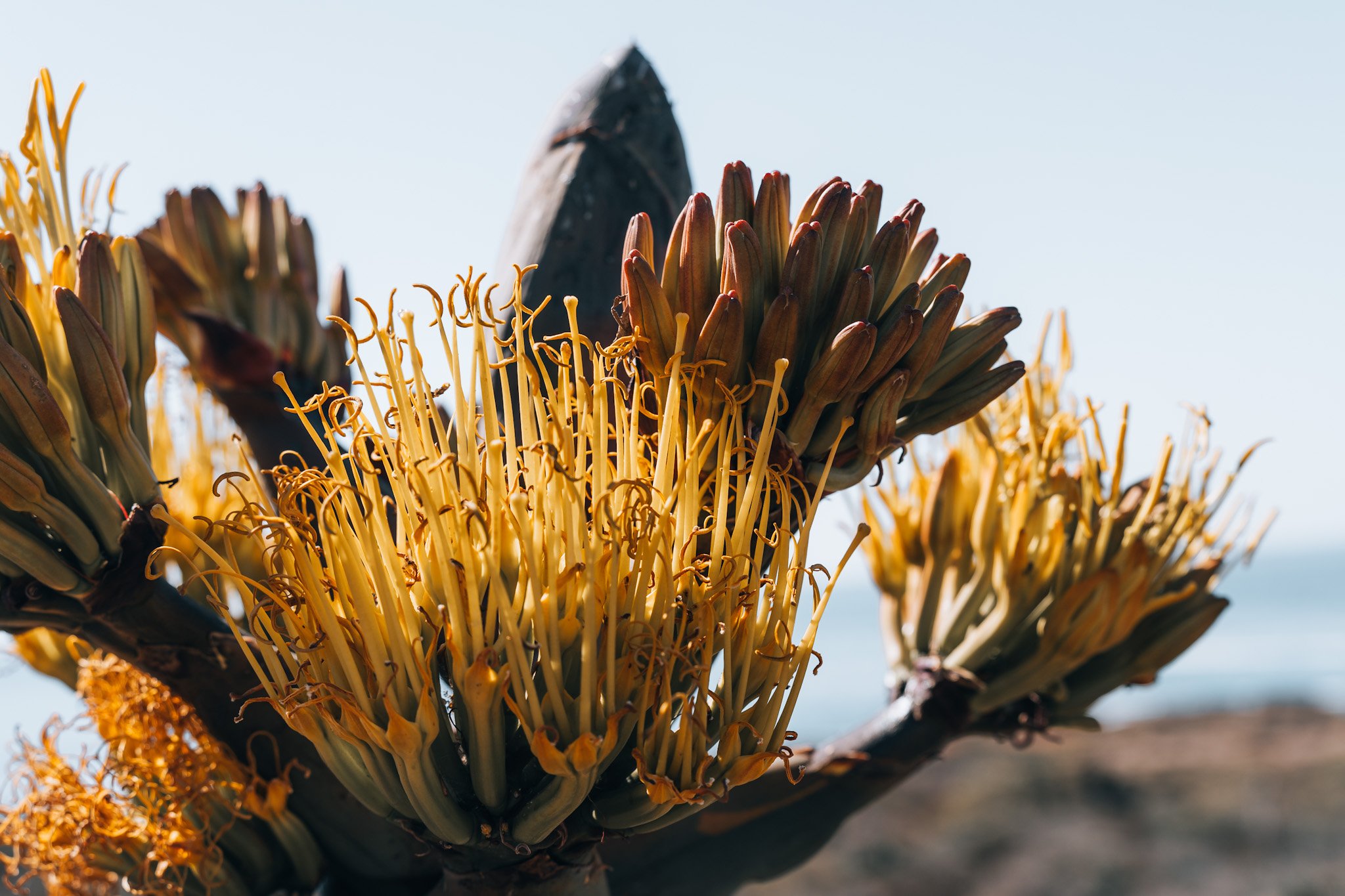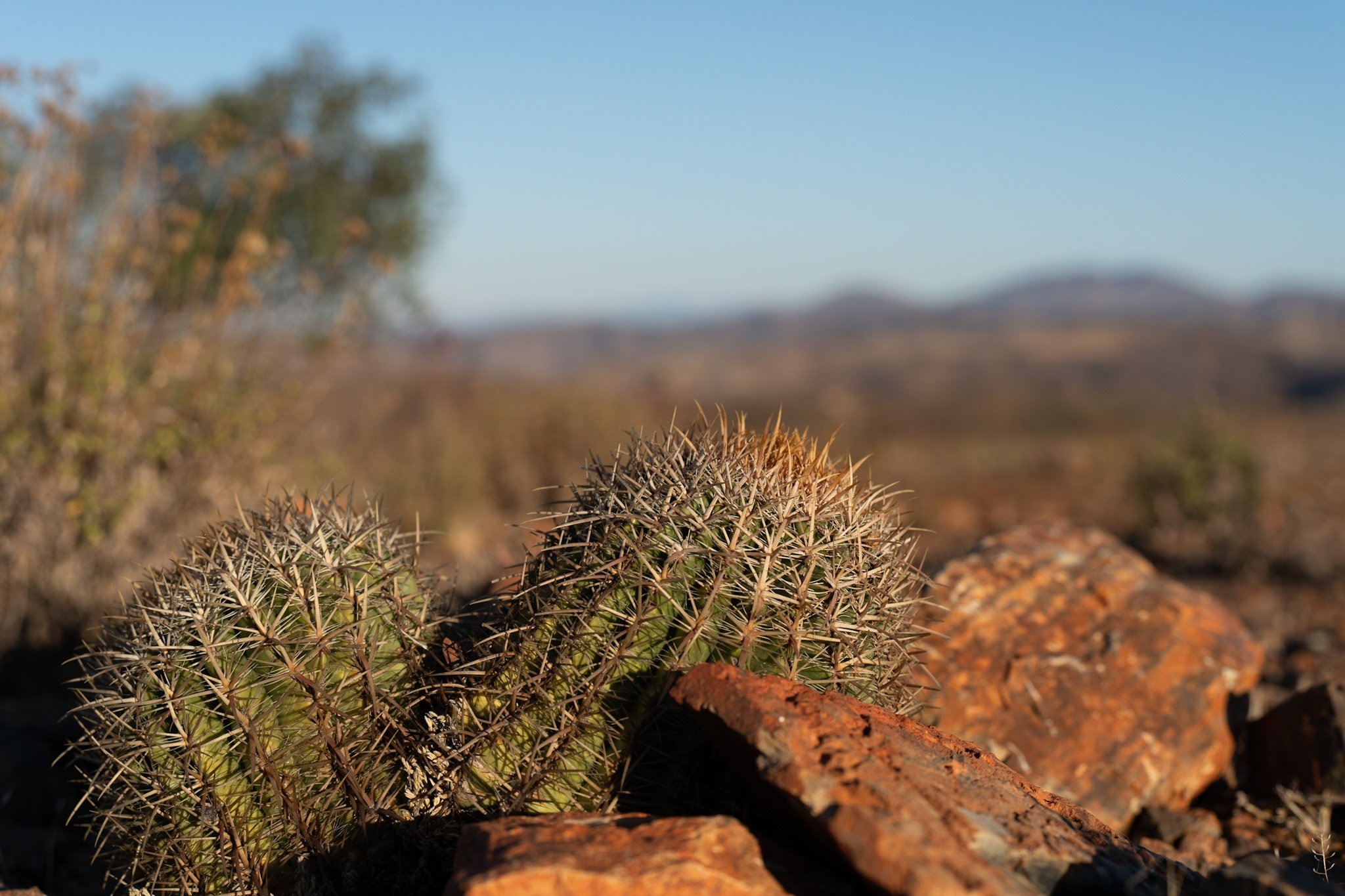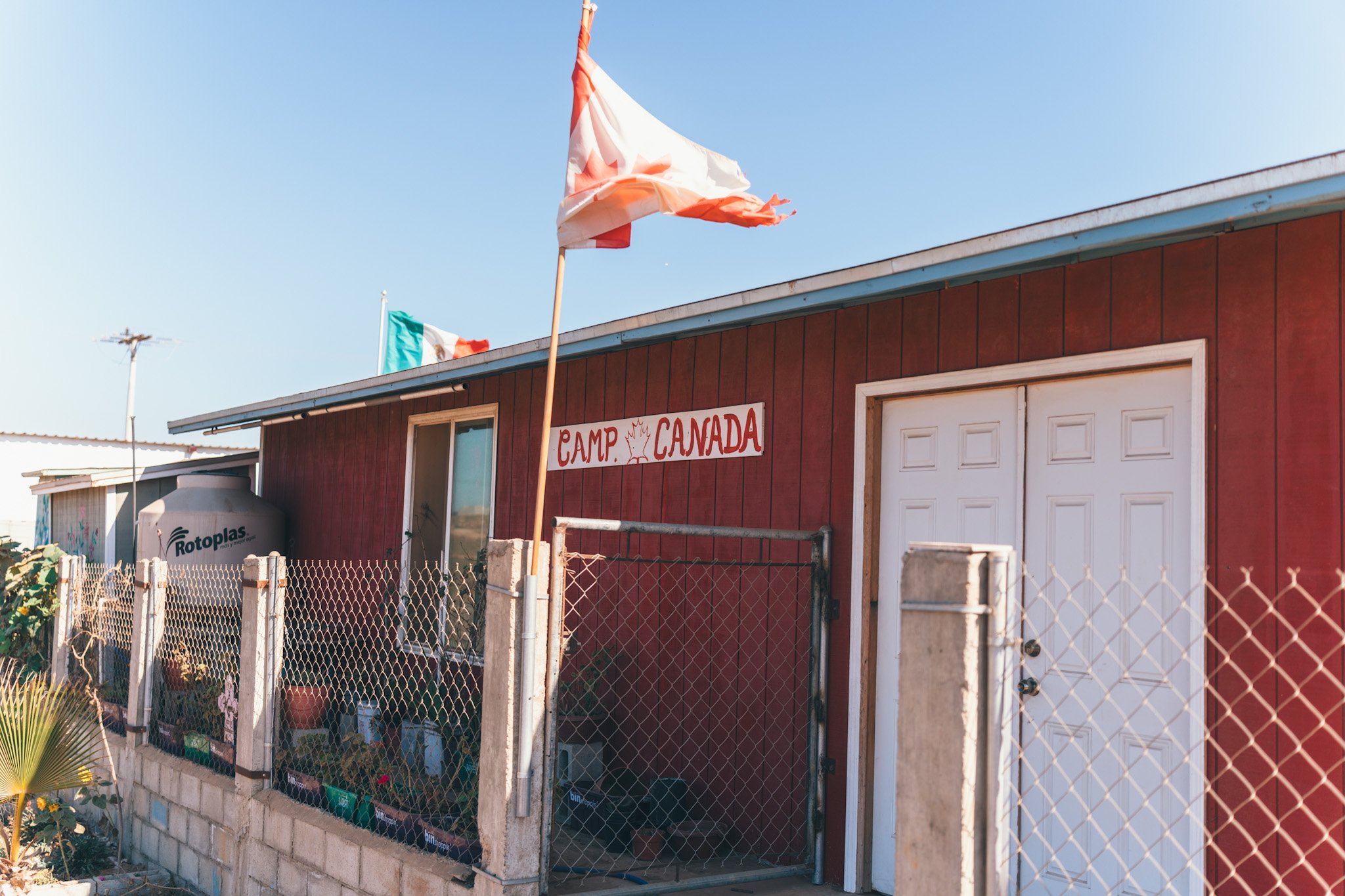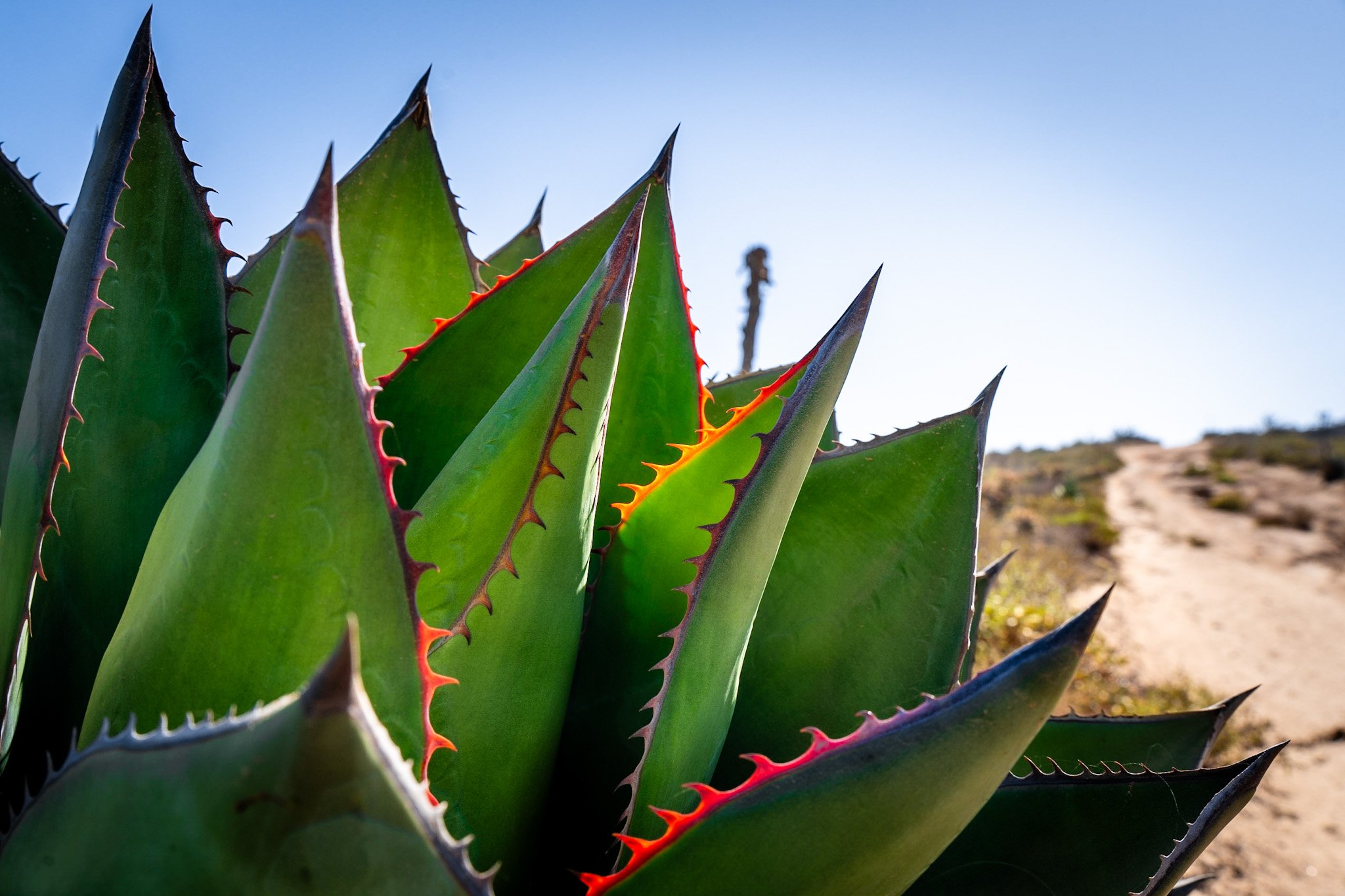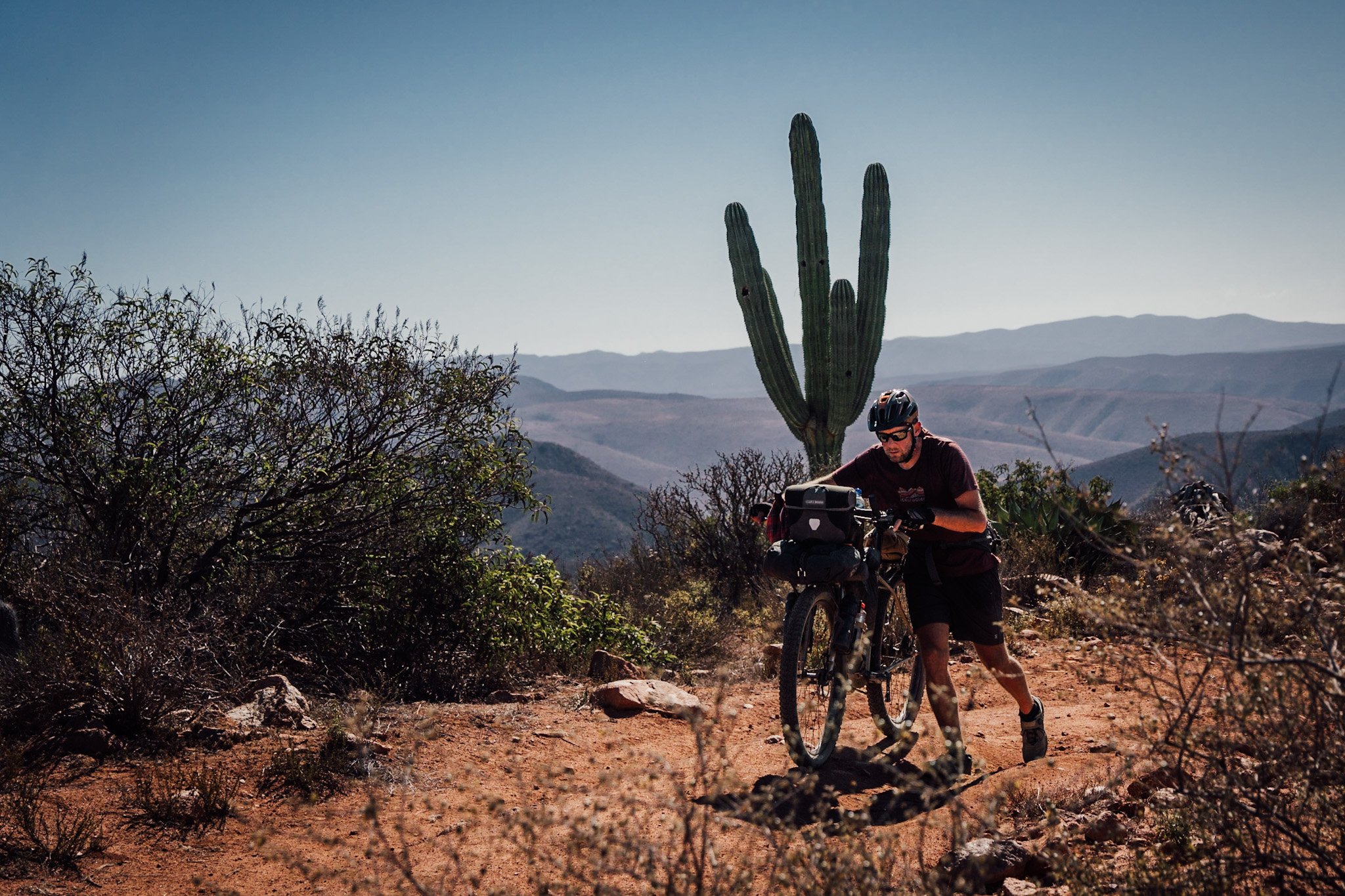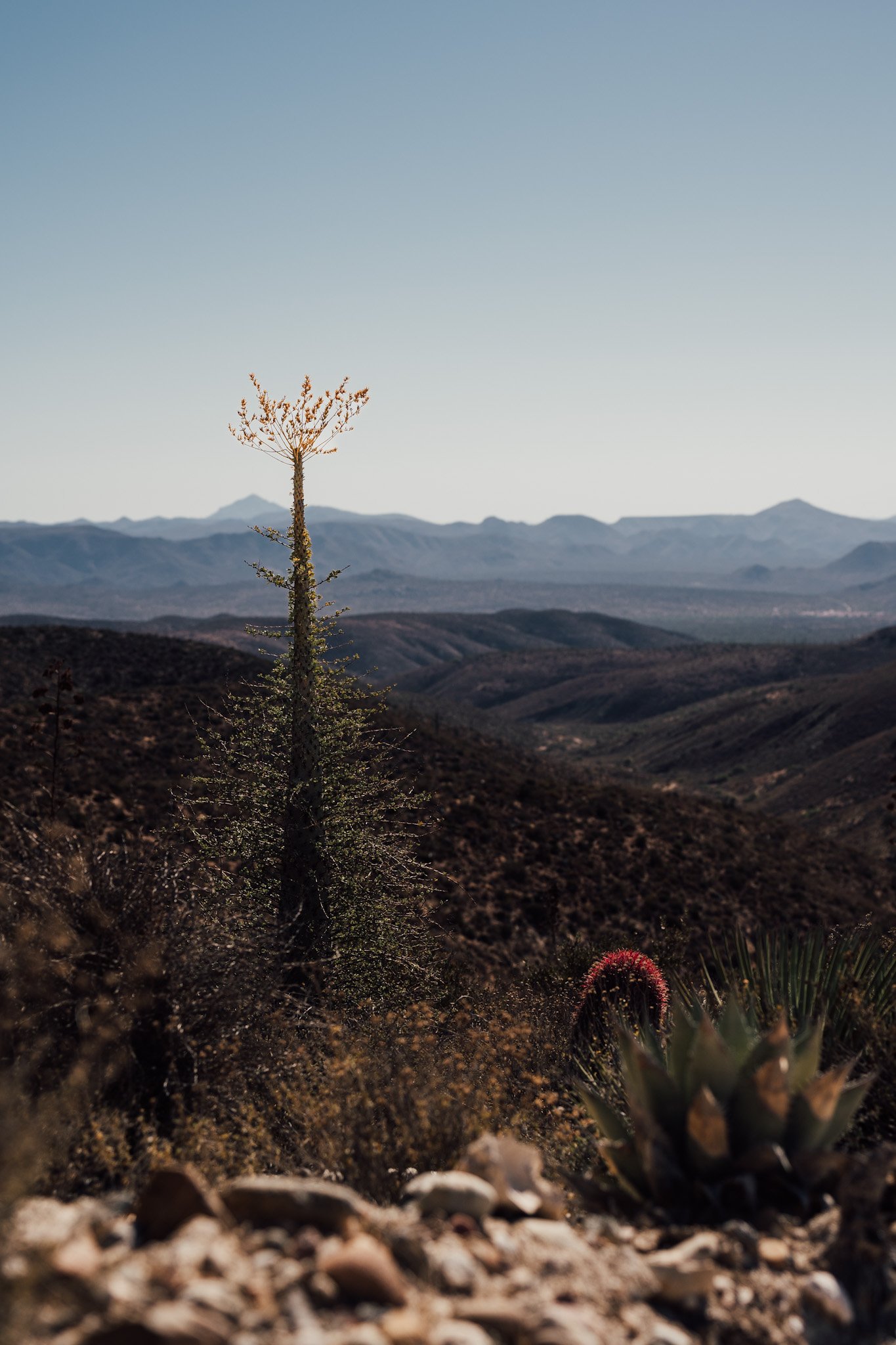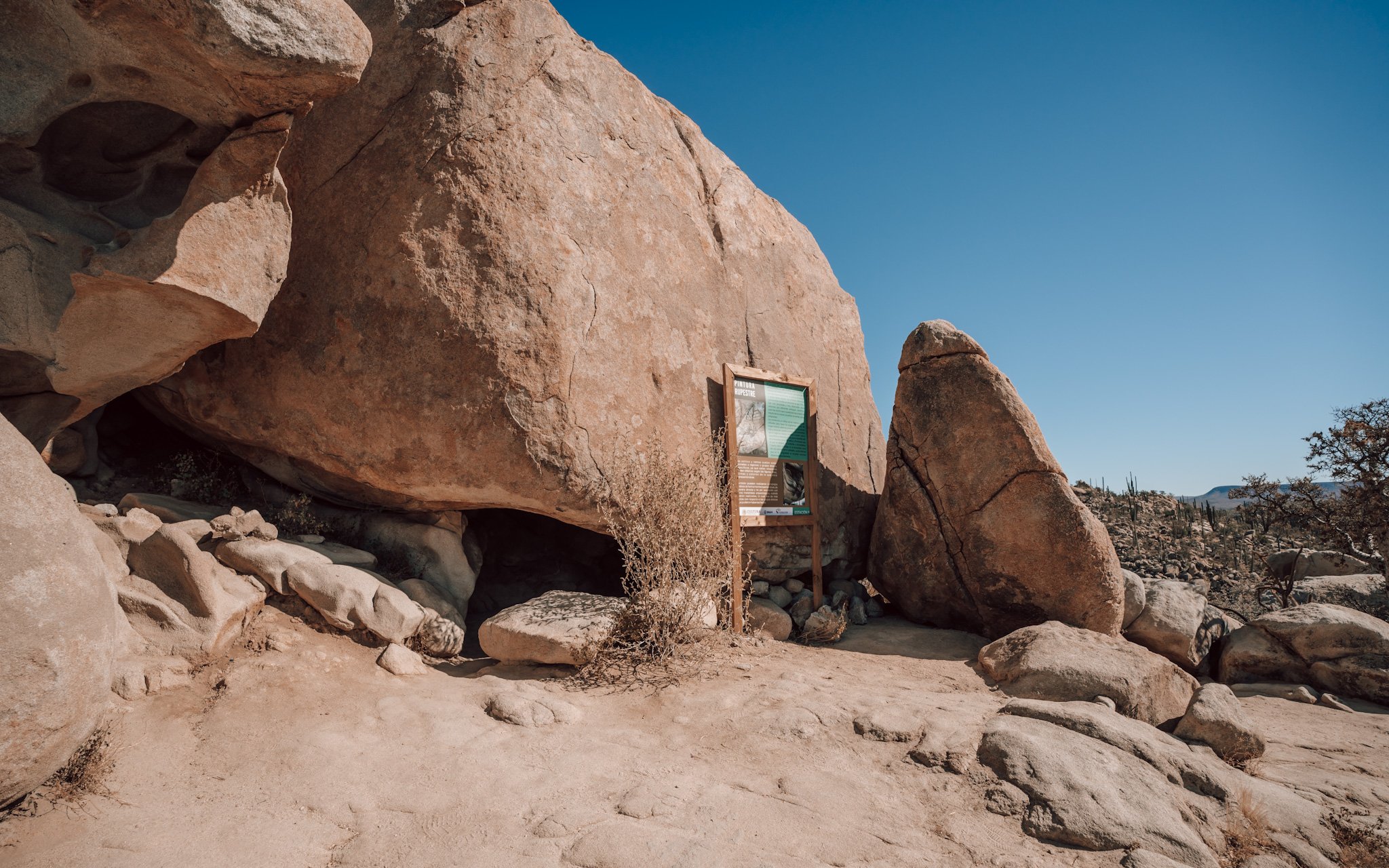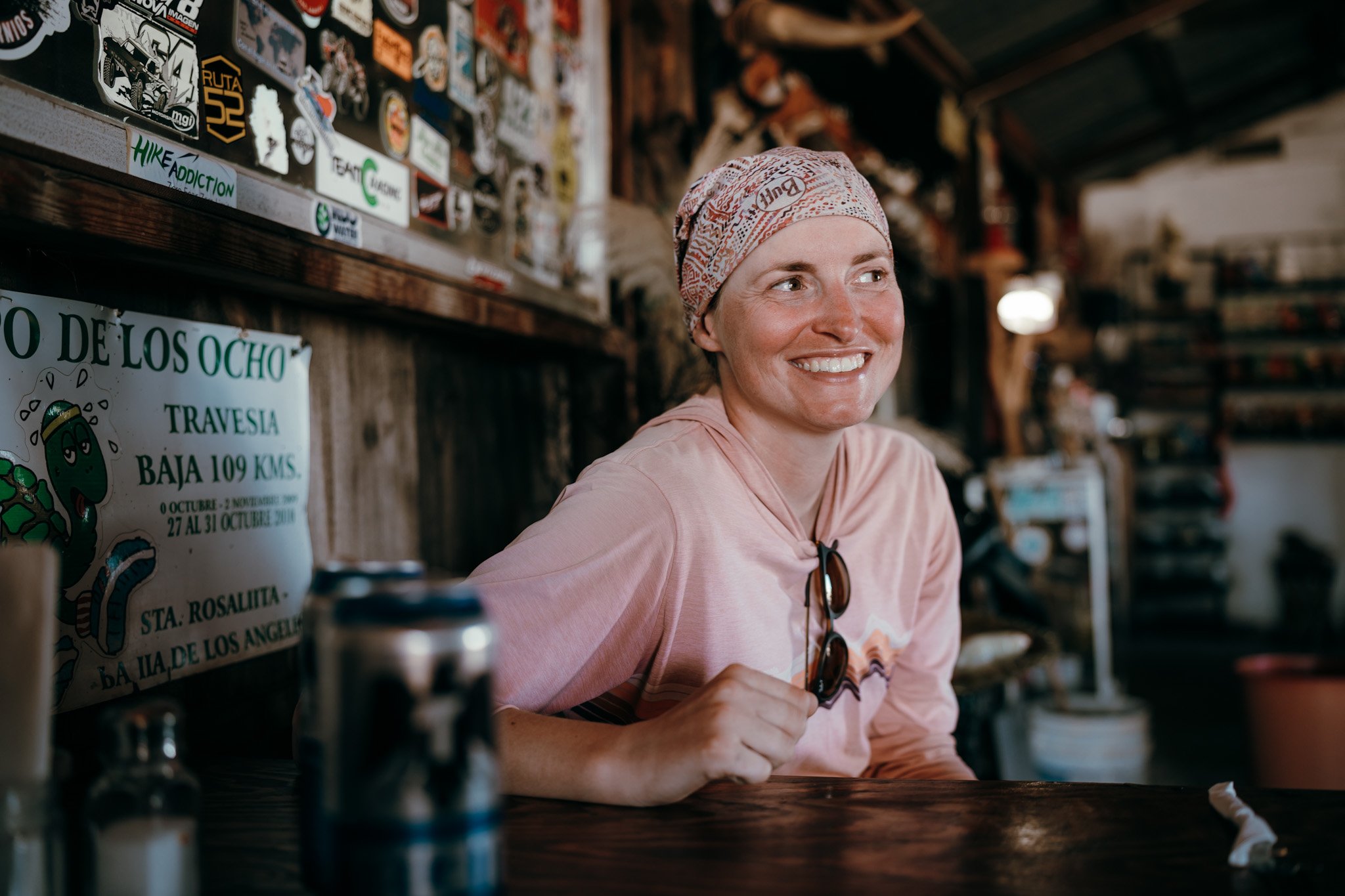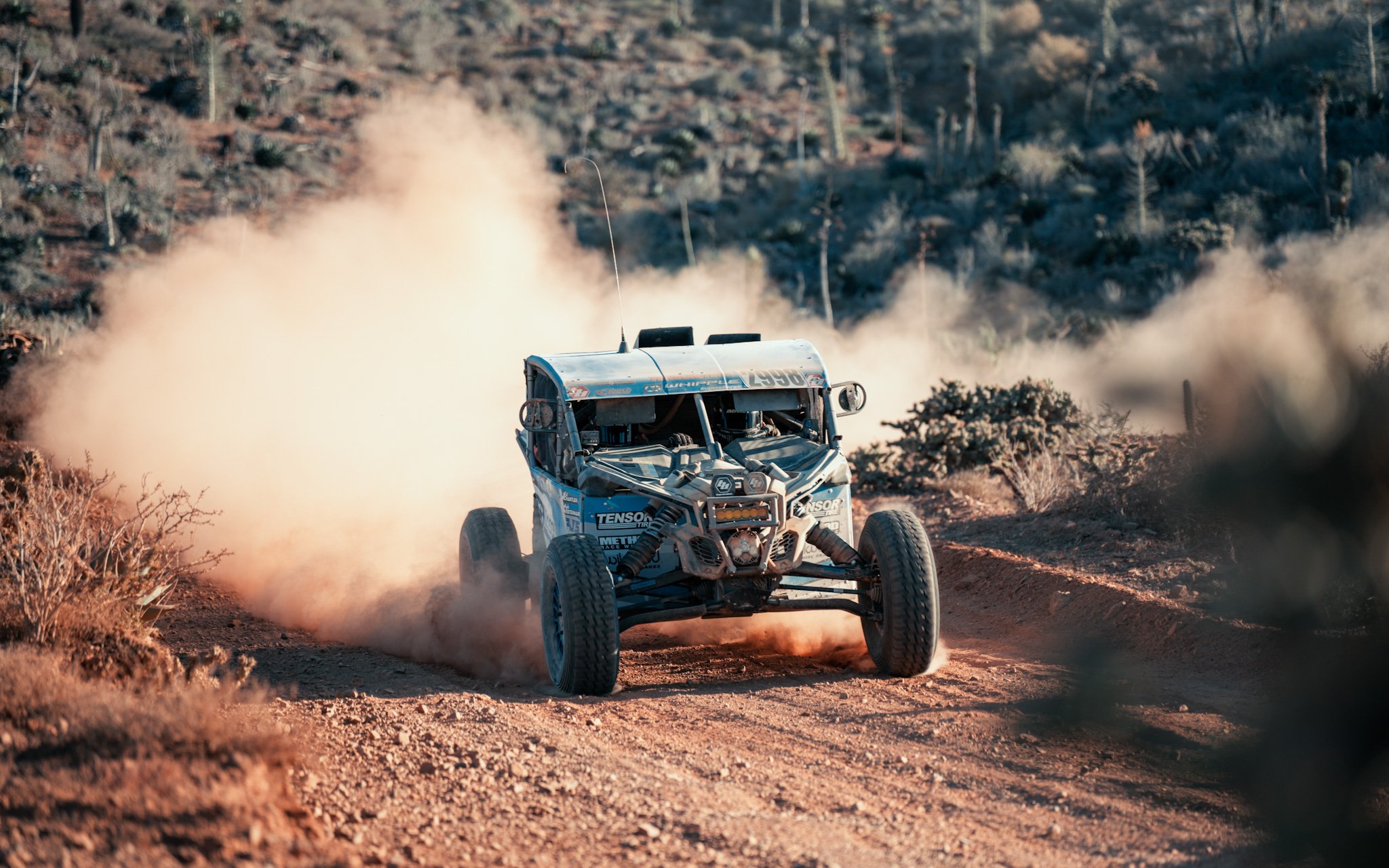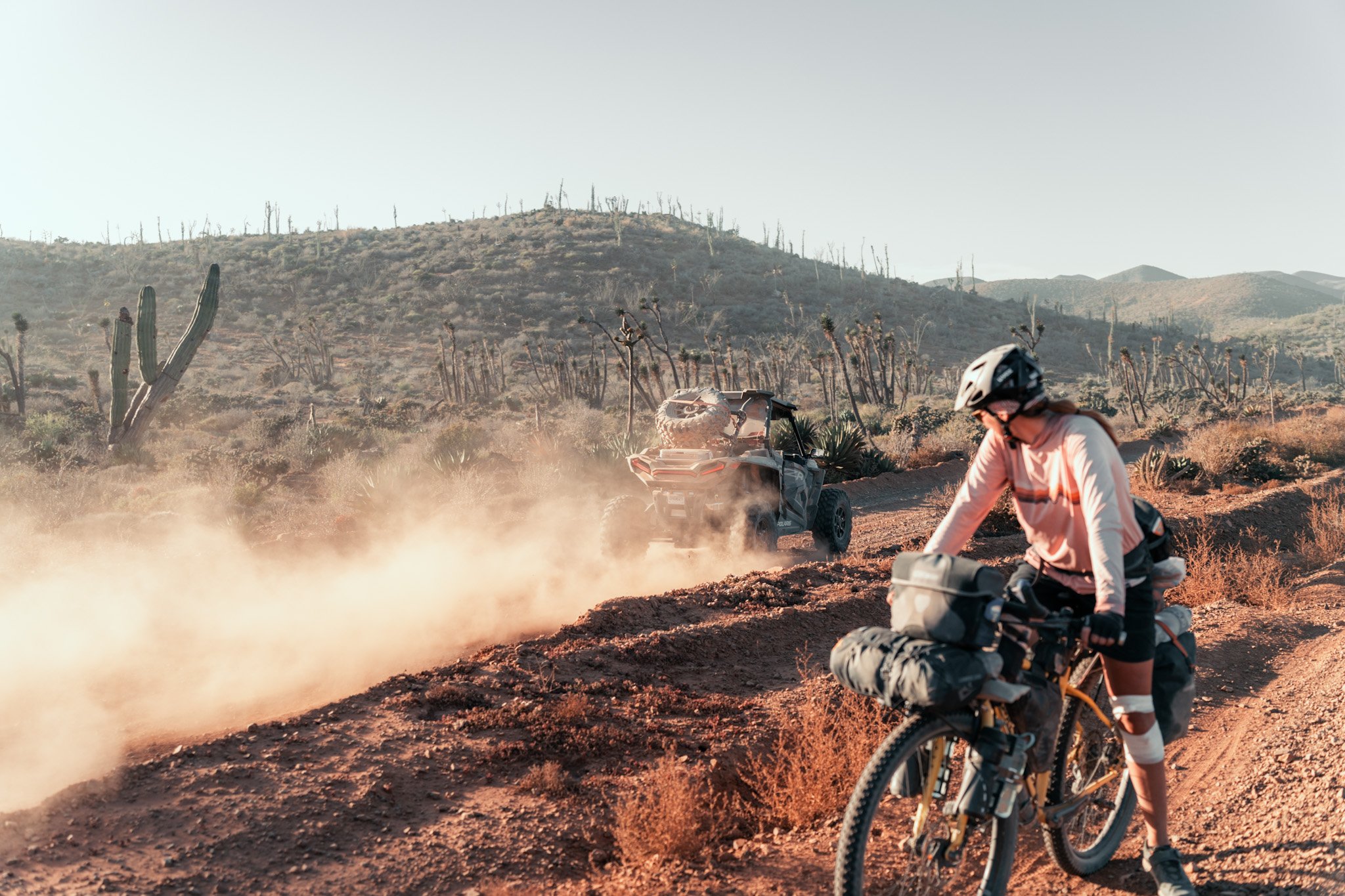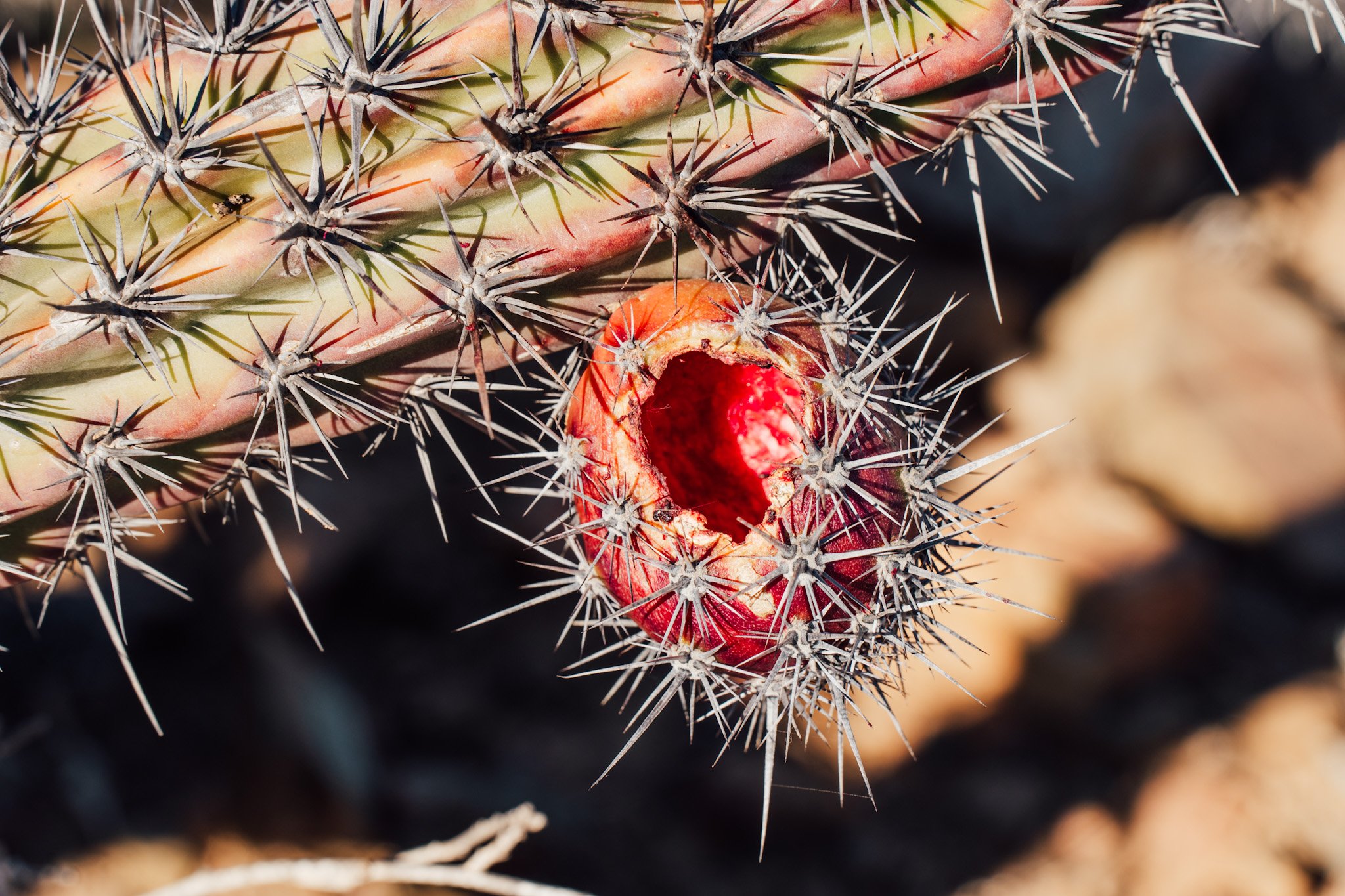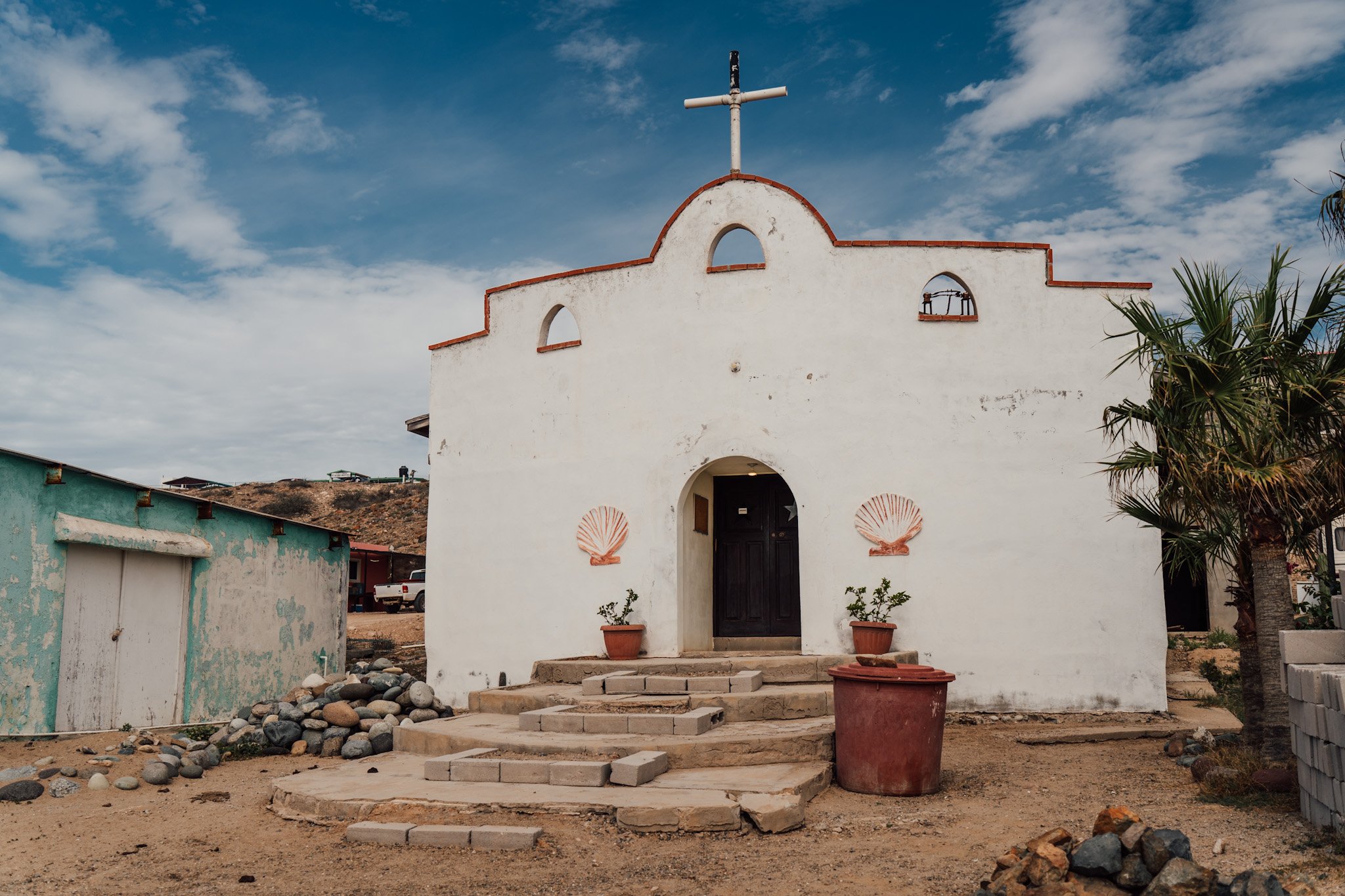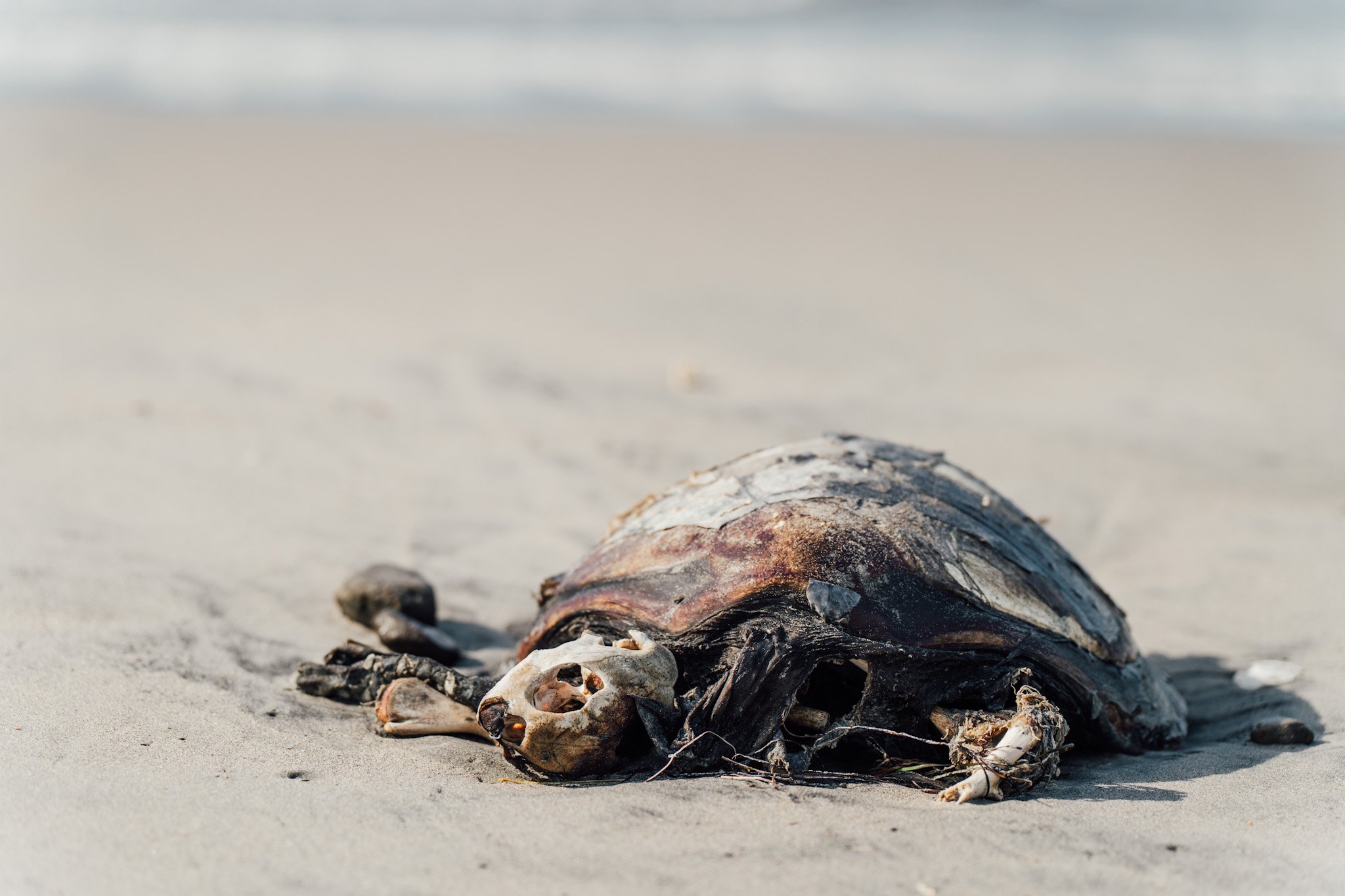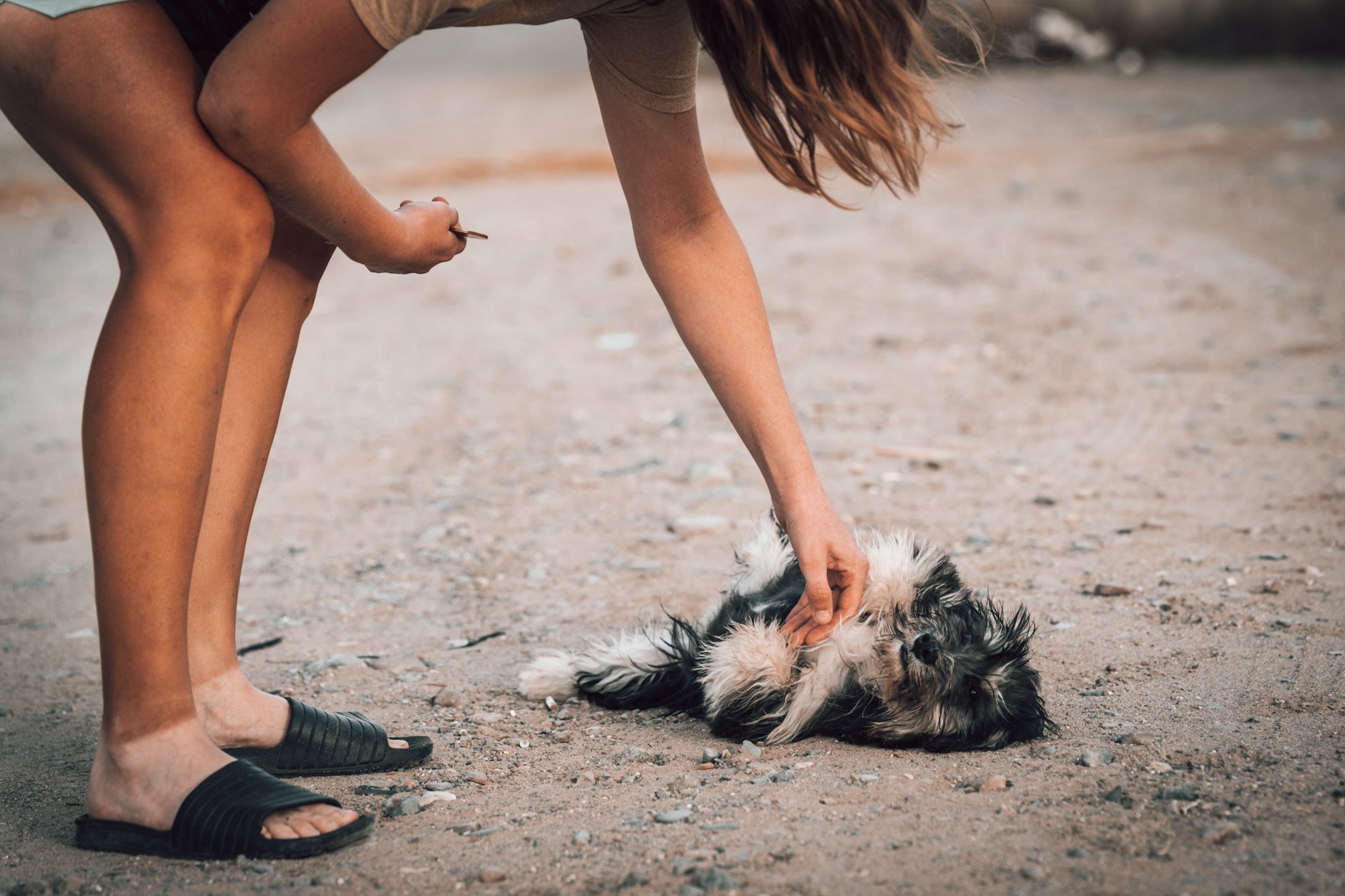Mexico - Baja California Norte
We cross the border with Mexico in Tecate. The 180-day visa was quickly stamped, the border officials were very friendly. For this, we got rid of a 10% fee for the cash withdrawal for the Mexican peso. The difference to the USA quickly becomes visible, the standard of living and the architectural style are much simpler.
Since we don't know Mexico yet and we didn't know what to expect in the border town, we booked an AirBnb in advance for the first night. We enjoy our first Tecate beer in our own pool house.
Our plan is to ride through the Mexican Peninsula on the "Baja Divide" route. The track is 95% unpaved and, according to our research, often very rocky or sandy. We feel that right after the first few kilometers. However, we are very enthusiastic about how our bikes master the rough surface and how reasonably well they cross the sand passages with the right air pressure.
In the big city of Ensenada, we plan to take a break for a week, but this turned into two because we couldn't get far from the toilet in the first week. Our spoiled European stomachs still have to get used to Mexican cuisine. We were very surprised that only slightly filtered, inedible salt water comes out of the tap and the shower. We noticed this when the second type of coffee also ended up in the spout.
We spend the time in Ensenada with Dalila and her family. They welcomed us very warmly, took us to Sunday breakfast and showed us the highlights of the city. We received our first Spanish lesson from Dalila's mom and she showed us how to negotiate properly in the market. Meanwhile, always smiling daughter Sofia learned English with us.
We spend the rest of the time in Ensenada on the Pacific promenade, watch sunsets on the beach and collect sand dollars (petrified sea urchins). In the famous Bar Andaluz we treat ourselves to a margarita and there is also a lot to discover in the city.
We are recovered and fit again! The next stage on the Baja Divide takes us for the first time to a long, remote stretch of coast. The descent to the Pacific in the evening light was incredible. The next day we see many pelicans plunging into the water for fishing or surfing on the waves close to the water surface.
In the next small village of Punta Colonet, we treat ourselves to a day break before the next larger stage. We notice that the garbage is often only unloaded outside the villages or burned directly on the street.
The stage goes through backcountry and mainly uphill, the landscape is still very bare and cacti can only be seen sporadically.
In Vincente Guerrero we meet Sarah and Gwenaël, two Dutchmen who are also on their way south. We are riding together for the next two days and get along very well. We all spend the night together with Vicky, a Canadian who teaches English here and is also very committed to non-profit. In her street, for example, she is the only one with a power connection and many come to her to charge the mobile phone. We were very shocked when she told us how poor this area is and how much suffering and problems it brings.
In general, only the main road where the small shops are located is paved in this region. The side roads are made of sand and fighting the dust is often abandoned.
Then it only went uphill again and that was very rocky into the backcountry again. We had to push a lot and were already a little disappointed with the landscape. However, we were overwhelmed from the descent to Valle de los Cirios. The countless Cirios trees and the Cardon cacti take our breath away - we were in the cactus wonderland.
On the way to Cataviña, we found an POI on the Google map for cave paintings, which are approx. 3000-6000 years old - the area was deserted.
Before the longest stage on the Baja Divide, we rest another day in Cataviña and enjoy the time in the "resting area" there.
We calculate our water supply for the 200 km stage through "nowhere" to 12 liters per person - it should be just enough. Drinking water is also available in bottles, but it is much cheaper to tap it from a large water tank in the mini markets. These are usually located on the roofs of the buildings.
We have to hurry up quite a bit on this section. On the one hand so that we don't run out of water and on the other hand the Baja 1000 will start in a few days. A race for rally vehicles and cross motorcycles that goes 1000 miles across the Peninsula and will often cross our route. We were already heavily dusted by some training sessions and we fled from the slopes when the buggies crossed by.
On this section, due to the warm, humid Pacific winds, we have a unique landscape and some plants that can only be seen here. The air quality here is so good that pretty much everything is covered with lichens. Some small bushes look like bonsai trees as a result. However, due to the water logistics, we had little time to enjoy this.
We were happy and relieved when we reached the small fishing village of Santa Rosaliíta. We treat ourselves to a big meal and ventilate our albino feet on the beach.
After a short passage on the beach and a longer section on the highway, we finally reach at dusk the state border to the southern part of the peninsula, Baja California Sur.




